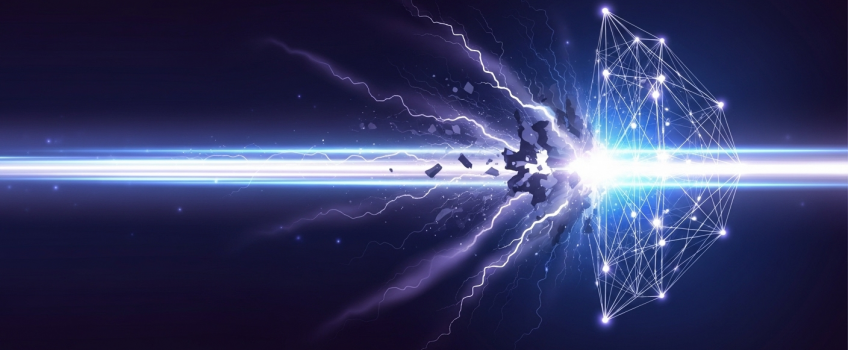Indestructible AI Agents: A Guide to Using Temporal

Indestructible Agents: A Deep Dive into Using Temporal for Long-Running, Fault-Tolerant AI Workflows
This is not a problem to be patched; it's an architectural challenge that requires a new foundation. At ActiveWizards, we solve this by engineering our agents on top of durable execution platforms like Temporal. This article is a deep dive into the "why" and "how" of this approach. We will provide a practical architectural blueprint for building long-running, fault-tolerant AI agents that can survive failures, resume automatically, and run to completion, no matter what.
The Core Problem: AI Agents Lack Durability
An AI agent's state is its most valuable asset. This includes its plan, its history of tool calls, intermediate results, and accumulated knowledge. In a typical Python application, this state lives in memory. If the process crashes, the state is gone forever. This is unacceptable for any business-critical process, such as:
- Running a batch analysis over millions of records.
- Executing a complex, multi-day data migration plan.
- Orchestrating a long-running customer support interaction that involves multiple API calls and human hand-offs.
The solution is to externalize the agent's execution logic and state into a system designed for fault tolerance. This is precisely what Temporal provides.
Expert Insight: Temporal as an External Agent Brain
Think of Temporal not as a library, but as a durable, external "brain" for your agent. Your agent's code defines the "master plan" (the Workflow). Temporal's job is to ensure that plan is executed to completion, step-by-step, preserving the state at every point, even if the "body" (the worker process) dies and is replaced.
The Architectural Blueprint: Separating Logic from Execution
The Temporal architecture fundamentally decouples the stateful workflow from the stateless workers that execute it.
- Temporal Cluster: The stateful core. It records every event in a workflow's history and knows exactly what the next step should be. This is the "indestructible" part.
- Agent Workers: A fleet of stateless processes. Their only job is to ask the Temporal Cluster for work, execute a single step (like an LLM call), and report the result back. They can be scaled, crashed, and restarted without affecting the workflow's integrity.
- Workflows: Your agent's core logic. This is deterministic code that orchestrates calls to Activities.
- Activities: The real-world actions. These are your agent's "tools"—making an LLM call, querying a database, or calling a third-party API. They can fail and be retried independently.
Diagram 1: The durable agent architecture using Temporal.
A Practical Example: A Durable Document Analysis Agent
Let's design an agent that analyzes a list of 10,000 document URLs. This workflow must be able to run for hours or days and survive any interruptions.
Step 1: Define the "Tool" as an Activity
Our non-deterministic, potentially fallible LLM call becomes a Temporal Activity. Temporal's retry policies will automatically handle transient failures.
# activities.py
from temporalio import activity
import my_llm_library # Your LLM client
@activity.defn
async def analyze_document_content(content: str) -> str:
"""Calls an LLM to summarize a document's content."""
activity.heartbeat() # Signals the activity is still alive
try:
summary = await my_llm_library.summarize(content)
return summary
except Exception as e:
activity.log.error(f"LLM call failed: {e}")
raise
Step 2: Define the Agent's Logic as a Workflow
The workflow orchestrates the entire process. Notice how state (`results` list, loop counter) is part of the workflow code. Temporal persists this state automatically.
# workflows.py
from temporalio import workflow
from datetime import timedelta
from .activities import analyze_document_content
@workflow.defn
class DocumentAnalysisWorkflow:
@workflow.run
async def run(self, doc_urls: list[str]) -> list[str]:
workflow.logger.info(f"Starting analysis of {len(doc_urls)} documents.")
results = []
for url in doc_urls:
# This is not a real HTTP call; it's a placeholder for another activity
content = f"Mock content from {url}"
# Execute the LLM analysis as a durable activity
summary = await workflow.execute_activity(
analyze_document_content,
content,
start_to_close_timeout=timedelta(minutes=5),
)
results.append(summary)
return results
If the worker running this workflow crashes after processing 5,000 documents, a new worker will pick up, be given the state (the first 5,000 results), and will seamlessly resume execution from document 5,001.
Production-Grade Workflow Checklist
Architecting with Temporal requires thinking about distributed systems principles.
- Idempotency is Non-Negotiable: Activities can be retried. If your activity is "create user account," you must ensure running it twice doesn't create two accounts. Design your external systems to be idempotent.
- Configure Timeouts and Retries Intelligently: An LLM call might take 2 minutes. A `start_to_close_timeout` of 1 minute will cause it to fail and retry unnecessarily. Match timeouts to the task, and configure retry policies to avoid excessive cost on activities that are expensive.
- Asynchronous Invocation: For workflows that run longer than a few seconds, don't wait for them to finish. Your client should start the workflow, get a handle, and then query the handle for status or receive a completion signal later (e.g., via a webhook or Kafka message).
- Observability: Use the Temporal Web UI. It provides a complete, visual trace of every workflow's execution history, including inputs, outputs, retries, and failures. It is an indispensable tool for debugging distributed systems.
Conclusion: From Fragile Scripts to Indestructible Processes
By integrating Temporal, we elevate AI agents from fragile, in-memory scripts to durable, enterprise-grade business processes. This architecture provides the guarantees of reliability, scalability, and observability that are prerequisites for deploying high-value, long-running AI tasks in production.
This approach perfectly embodies the ActiveWizards mission: we are the architects who bridge the gap between brilliant AI concepts and the robust, scalable engineering required to make them a reality for the enterprise.
Build AI Agents That Can't Be Stopped
Ready to move your long-running AI processes from fragile scripts to fault-tolerant, production-grade systems? Our team specializes in designing and deploying indestructible agentic workflows using advanced platforms like Temporal.



Comments (0)
Add a new comment: